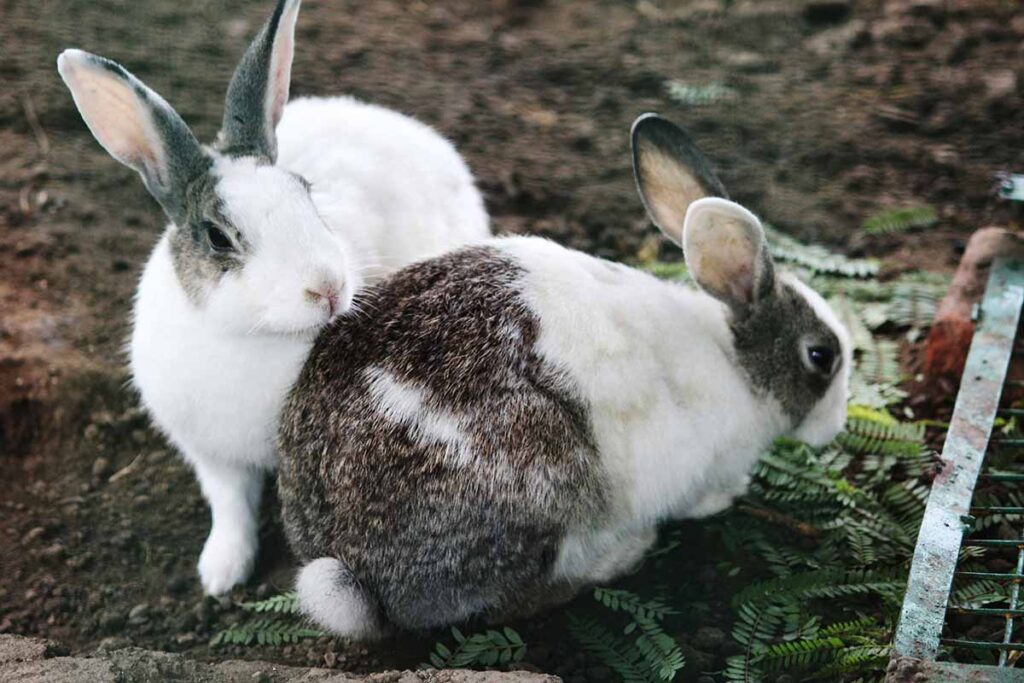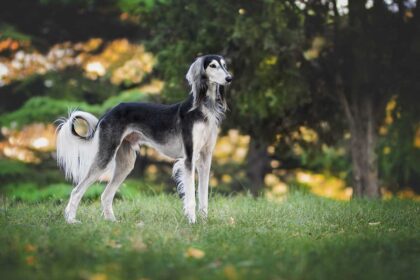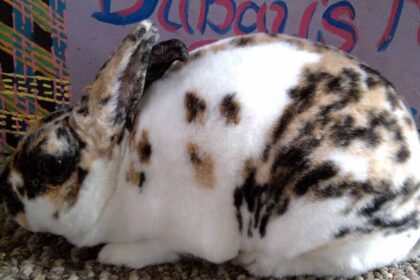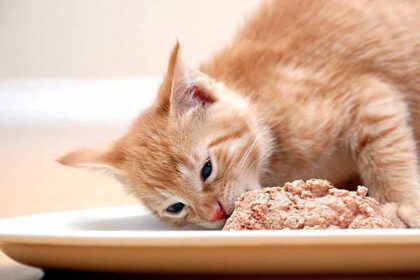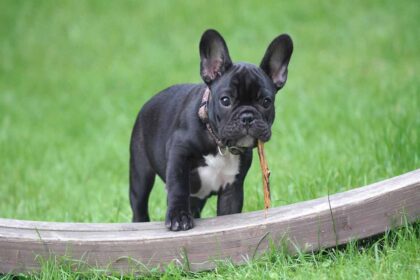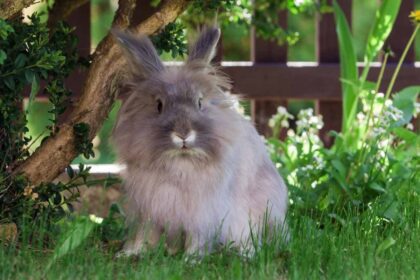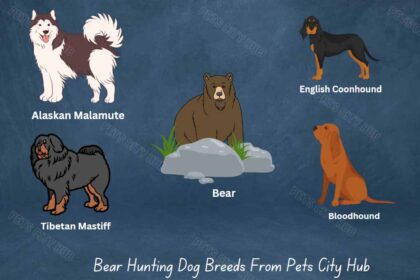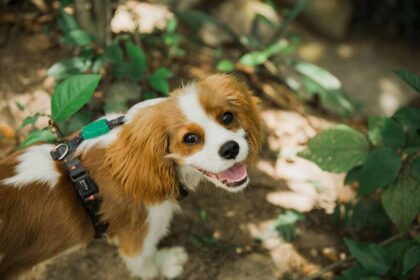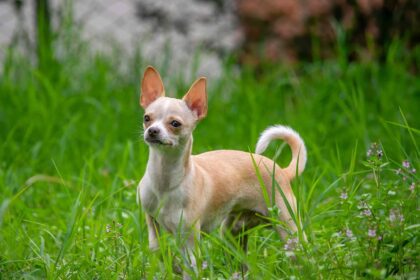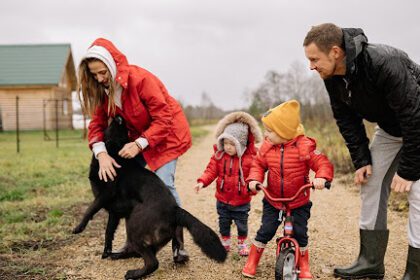Have you ever seen a rabbit bigger than a small dog? Believe it or not, there are large rabbit breeds out there. These gentle giants can weigh as much as a smallish pooch, but unlike their canine counterparts, they’re known for their docile and cuddly personalities. Owning a large rabbit is a commitment, though.
They need spacious enclosures, plenty of hay to keep their ever-growing teeth healthy, and of course, lots of love and attention. Some of the most popular large rabbit breeds include the Flemish Giant, the undisputed heavyweight champ of the rabbit world, tipping the scales at up to 25 to 30 pounds on average.
Following closely behind are the French Lop with their signature floppy ears and the British Giant, known for their laid-back personalities. The world record for the heaviest rabbit is actually held by Darius, a Flemish Giant rabbit that weighs 49 lb (22 kg) and measures 1.3 m (4 ft 3 in). Let’s See The 12 Large Rabbit Breeds :
1. The Flemish Giant Rabbit
 The Flemish Giant, a gentle giant indeed, hails from Flanders, Belgium, and has been around since at least the 16th century. Bred for their size, they’re thought to be descendants of various meat and fur rabbits. Today, these friendly giants are popular not just for their impressive weight, but also for their calm and cuddly personalities among large rabbit breeds.
The Flemish Giant, a gentle giant indeed, hails from Flanders, Belgium, and has been around since at least the 16th century. Bred for their size, they’re thought to be descendants of various meat and fur rabbits. Today, these friendly giants are popular not just for their impressive weight, but also for their calm and cuddly personalities among large rabbit breeds.
Characteristics:
✦ Weight: The average Flemish Giant weighs around 15 pounds, but some real whoppers can reach closer to 25 pounds.
✦ Lifespan: With proper care, Flemish Giants can live for 8-10 years, making them long-term companions.
✦ Color: Flemish Giants come in a variety of colors including white, black, fawn, and sandy.
✦ Diet: Like all rabbits, Flemish Giants are herbivores. Their diet should primarily consist of hay, with some fresh vegetables and a small amount of pellets daily.
✦ Activity Level: While not super energetic, Flemish Giants still need daily exercise time to stay healthy and prevent boredom. Providing them with a spacious enclosure and plenty of safe chew toys is important.
✦ Grooming: Flemish Giants have short, dense fur that doesn’t require extensive grooming. Brushing them once or twice a week will help remove loose fur and keep their coat healthy.
✦ Temperament: These gentle giants live up to their name! They are known for being docile, calm, and patient, even around children and other pets among large rabbit breeds.
2. The Continental Giant Rabbit
 The Continental Giant, a close relative to the Flemish Giant, is a more recent arrival on the scene, first documented in the 1980s. While the exact origins are a bit fuzzy, they likely stem from a mix of giant rabbit breeds from Europe. Despite their massive size potential, these gentle giants are known for their docile and friendly personalities, making them popular choices for those seeking a cuddly lap bunny in an impressive package.
The Continental Giant, a close relative to the Flemish Giant, is a more recent arrival on the scene, first documented in the 1980s. While the exact origins are a bit fuzzy, they likely stem from a mix of giant rabbit breeds from Europe. Despite their massive size potential, these gentle giants are known for their docile and friendly personalities, making them popular choices for those seeking a cuddly lap bunny in an impressive package.
Characteristics:
✦ Weight: Continental Giants are neck-and-neck with Flemish Giants for the heavyweight title, reaching lengths of up to 3 feet and potentially exceeding 25 pounds.
✦ Lifespan: With proper care, Continental Giants can live 4-5 years.
✦ Color: Continental Giants come in a variety of colors, similar to Flemish Giants, including white, black, and various shades of brown and fawn.
✦ Diet: These herbivores need a diet mainly consisting of hay, supplemented with fresh vegetables and a limited amount of pellets daily.
✦ Activity Level: While not super active, Continental Giants need daily exercise to stay healthy and prevent boredom. Providing a spacious enclosure and safe chew toys is crucial.
✦ Grooming: Their short, dense fur requires minimal grooming. Brushing them once or twice a week helps remove loose fur and maintain a healthy coat.
✦ Temperament: Just like their Flemish Giant cousins, Continentals are known for their gentle and docile nature. They are calm and patient, making them good companions for families.
3. The Spanish Giant Rabbit
 The Spanish Giant, hailing from Spain as the name suggests, has a bit of a mysterious past. Developed sometime in the early 20th century, the exact origins are unclear. Some believe they were bred from a mix of Flemish Giants and local Spanish breeds. While their numbers dwindled due to commercial rabbit hybrids, conservation efforts are underway to bring this friendly giant back into the spotlight.
The Spanish Giant, hailing from Spain as the name suggests, has a bit of a mysterious past. Developed sometime in the early 20th century, the exact origins are unclear. Some believe they were bred from a mix of Flemish Giants and local Spanish breeds. While their numbers dwindled due to commercial rabbit hybrids, conservation efforts are underway to bring this friendly giant back into the spotlight.
Characteristics:
✦ Weight: Spanish Giants can reach weights of roughly 12-15 pounds, placing them behind Flemish Giants and Continentals.
✦ Lifespan: Information on lifespan is limited, but it’s likely similar to other large rabbit breeds, potentially around 5-8 years with proper care.
✦ Color: While specific color variations aren’t documented extensively, some sources suggest they might share similar colors to Flemish Giants, such as white, black, and fawn.
✦ Diet: As herbivores, their diet would likely consist mainly of hay, supplemented with fresh vegetables and a limited amount of pellets daily.
✦ Activity Level: Similar to other large breeds, Spanish Giants would likely need daily exercise and a spacious enclosure to stay healthy and prevent boredom.
✦ Grooming: Given their short fur, extensive grooming wouldn’t be necessary. Regular brushing (once or twice a week) would probably suffice.
✦ Temperament: Spanish Giants are thought to possess a docile and friendly temperament, similar to other giant rabbit breeds.
4. The Blanc de Bouscat Rabbit
 The Blanc de Bouscat, a French fancy from Bordeaux, debuted in the early 1900s. Bred for their luxurious, snowy white coat, they were created by crossing Flemish Giants (for size) with French Angoras (for silky fur) and Champagne d’Argents. While once quite popular, especially in French rabbit shows, these days the Blanc de Bouscat is a bit of a rare find, even in their homeland.
The Blanc de Bouscat, a French fancy from Bordeaux, debuted in the early 1900s. Bred for their luxurious, snowy white coat, they were created by crossing Flemish Giants (for size) with French Angoras (for silky fur) and Champagne d’Argents. While once quite popular, especially in French rabbit shows, these days the Blanc de Bouscat is a bit of a rare find, even in their homeland.
Characteristics:
✦ Weight: Blanc de Bouscat rabbits are on the lighter side of giant breeds, typically weighing around 10-12 pounds, though some might reach 15 pounds.
✦ Lifespan: Information on lifespan is limited, but it’s likely similar to other medium-sized rabbit breeds, potentially around 7-10 years with proper care.
✦ Color: As their name suggests (“Blanc” meaning white), Blanc de Bouscats are known for their pure white coat.
✦ Diet: Like all rabbits, they’re herbivores and their diet should primarily consist of hay, with some fresh vegetables and a controlled amount of pellets daily.
✦ Activity Level: While not super energetic, Blanc de Bouscats still need daily exercise to stay healthy. Providing a spacious enclosure and safe chew toys is important.
✦ Grooming: Their medium-length fur requires more attention than short-haired breeds. Regular brushing (2-3 times a week) will help prevent matting and maintain a healthy coat.
✦ Temperament: These gentle giants are known for their calm and friendly personalities, making them good companions for those who appreciate a cuddly lap rabbit.
5. The British Giant Rabbit
 The British Giant, as the name suggests, hails from the United Kingdom. Developed in the 1940s, they were bred from various colored Flemish Giants imported from the United States. Unlike their Flemish cousins with a single recognized steel grey color, British Giants come in a wider variety of colors. These gentle giants are known for their easy-going personalities, making them popular choices for families seeking a big, friendly bunny among large rabbit breeds.
The British Giant, as the name suggests, hails from the United Kingdom. Developed in the 1940s, they were bred from various colored Flemish Giants imported from the United States. Unlike their Flemish cousins with a single recognized steel grey color, British Giants come in a wider variety of colors. These gentle giants are known for their easy-going personalities, making them popular choices for families seeking a big, friendly bunny among large rabbit breeds.
Characteristics:
✦ Weight: British Giants are on the lighter side of giant breeds, typically weighing between 12-15 pounds.
✦ Lifespan: With proper care, British Giants can live for 5-8 years.
✦ Color: Unlike their single-colored Flemish Giant cousins, British Giants come in a wider variety of colors, including white, black, agouti (brown with black ticking), steel grey, and sandy fawn.
✦ Diet: As herbivores, their diet should primarily consist of hay, with some fresh vegetables and a controlled amount of pellets daily.
✦ Activity Level: While not super energetic, British Giants still need daily exercise to stay healthy. Providing a spacious enclosure and safe chew toys is important.
✦ Grooming: Their short to medium-length fur requires moderate grooming. Brushing them once or twice a week will help remove loose fur and maintain a healthy coat.
✦ Temperament: These gentle giants are known for their relaxed and easy-going personalities, making them good companions for families with children who understand how to handle rabbits properly among large rabbit breeds.
6. The Hungarian Giant Rabbit
 The Hungarian Giant, as the name suggests, hails from Hungary. Developed around 200 years ago, they were initially called the Hungarian Agouti due to their agouti fur color. Bred for both meat and fur, these gentle giants later expanded their color palette beyond agouti and are now recognized for their docile personalities and ability to thrive as pets or show rabbits among large rabbit breeds.
The Hungarian Giant, as the name suggests, hails from Hungary. Developed around 200 years ago, they were initially called the Hungarian Agouti due to their agouti fur color. Bred for both meat and fur, these gentle giants later expanded their color palette beyond agouti and are now recognized for their docile personalities and ability to thrive as pets or show rabbits among large rabbit breeds.
Characteristics:
✦ Weight: Hungarian Giants are on the lighter side of giant breeds, typically weighing between 11-15 pounds.
✦ Lifespan: With proper care, Hungarian Giants can live for 8-12 years.
✦ Color: Unlike their initial “Agouti” colored beginnings, Hungarian Giants now come in a variety of colors including white, black, agouti (greyish-brown with black ticking), and broken colors (a mix of white and another color).
✦ Diet: As herbivores, their diet should primarily consist of high-quality hay, supplemented with fresh vegetables and a controlled amount of pellets daily.
✦ Activity Level: While not overly energetic, Hungarian Giants still need daily exercise to stay healthy and prevent boredom. Providing a spacious enclosure and safe chew toys is important.
✦ Grooming: Their short, dense fur requires minimal grooming. Brushing them once or twice a week will help remove loose fur and keep their coat healthy.
✦ Temperament: Hungarian Giants are known for their docile and friendly personalities, making them good companions for those who appreciate a cuddly lap rabbit among large rabbit breeds.
7. The French Lop Rabbit
 The French Lop, known for their luxuriously long, floppy ears, originated in France around the late 19th century. Developed by crossing English Lops (for their signature ears) with other large breeds, French Lops were bred not just for size, but also for their calm and cuddly demeanors. Today, these gentle giants are popular with families seeking a friendly and impressive house rabbit.
The French Lop, known for their luxuriously long, floppy ears, originated in France around the late 19th century. Developed by crossing English Lops (for their signature ears) with other large breeds, French Lops were bred not just for size, but also for their calm and cuddly demeanors. Today, these gentle giants are popular with families seeking a friendly and impressive house rabbit.
Characteristics:
✦ Weight: French Lops are on the lighter side of giant breeds, typically weighing between 10-15 pounds.
✦ Lifespan: With proper care, French Lops can live for 5-8 years.
✦ Color: French Lops come in a variety of solid and broken coat colors. Solid colors include white, black, and various shades of brown and fawn. Broken colors feature a combination of these base colors with white markings.
✦ Diet: As herbivores, their diet should primarily consist of high-quality hay, with some fresh vegetables and a limited amount of pellets daily.
✦ Activity Level: French Lops are moderately active rabbits. They need daily exercise time to stay healthy and prevent boredom. Providing a spacious enclosure with room to hop and explore, along with safe chew toys, is crucial.
✦ Grooming: Their dense fur requires regular grooming (2-3 times a week) to prevent matting. Using a slicker brush will help remove loose fur and keep their coat healthy.
✦ Temperament: French Lops are known for their calm, docile, and friendly personalities. They enjoy human interaction and can be cuddly lap rabbits, but due to their size, proper handling is important, especially around young children.
8. The Checkered Giant Rabbit
 The Checkered Giant, a true head-turner, is a relatively new breed developed in the 20th century. The exact origin is a bit fuzzy, but it’s believed they were created by crossing Flemish Giants with other large, spotted breeds. These gentle giants are known for their distinctive black and white checkered patterns, making them a captivating choice for those who love a unique-looking pet.
The Checkered Giant, a true head-turner, is a relatively new breed developed in the 20th century. The exact origin is a bit fuzzy, but it’s believed they were created by crossing Flemish Giants with other large, spotted breeds. These gentle giants are known for their distinctive black and white checkered patterns, making them a captivating choice for those who love a unique-looking pet.
Characteristics:
✦ Weight: Checkered Giants are on the lighter side of giant breeds, typically weighing between 10-12 pounds.
✦ Lifespan: With proper care, Checkered Giants can live for 5-8 years.
✦ Color: Unlike most giant breeds, Checkered Giants have a distinctive color pattern. They are distinguished by their white coat with black or blue patterns, which include rings around the eyes, colored ears, cheek flashes, a butterfly marking on the nose, a dorsal stripe running down the spine, and colorful patches on the haunches.
✦ Diet: As herbivores, their diet should primarily consist of high-quality hay, supplemented with fresh vegetables and a controlled amount of pellets daily.
✦ Activity Level: While not super energetic, Checkered Giants still need daily exercise to stay healthy and prevent boredom. Providing a spacious enclosure and safe chew toys is important.
✦ Grooming: Their short to medium-length fur requires minimal grooming. Brushing them once or twice a week will help remove loose fur and keep their coat healthy.
✦ Temperament: Checkered Giants are known for their gentle and friendly personalities. However, compared to some other breeds, they might be slightly less cuddly or cuddly for shorter bursts. They are still considered good companions, but potential owners should be aware of this slight temperament difference.
9. The English Lop Rabbit
 The English Lop, the granddaddy of all lop-eared rabbits, boasts a long history in England. Dating back to the 18th century, they were one of the first breeds specifically bred for their distinctive drooping ears. While other lop breeds emerged later, the English Lop remains a popular choice for those who love a friendly giant with a unique and charming appearance among large rabbit breeds.
The English Lop, the granddaddy of all lop-eared rabbits, boasts a long history in England. Dating back to the 18th century, they were one of the first breeds specifically bred for their distinctive drooping ears. While other lop breeds emerged later, the English Lop remains a popular choice for those who love a friendly giant with a unique and charming appearance among large rabbit breeds.
Characteristics:
✦ Weight: Information on English Lop weight can vary depending on the source. They are generally considered a medium-sized lop breed, typically weighing between 7-11 pounds.
✦ Lifespan: With proper care, English Lops can live for 8-12 years, making them a potentially long-term companion.
✦ Color: English Lops come in a wide variety of colors and markings, including solid colors like white, black, and various shades of brown and fawn. They can also have broken colors with a combination of these base colors and white markings.
✦ Diet: As herbivores, their diet should primarily consist of high-quality hay, with some fresh vegetables and a limited amount of pellets daily.
✦ Activity Level: English Lops are moderately active rabbits. They need daily exercise time to stay healthy and prevent boredom. Providing a spacious enclosure with room to hop and explore, along with safe chew toys, is important.
✦ Grooming: Their long fur requires regular grooming (2-3 times a week) to prevent matting. Using a slicker brush and a comb will help remove loose fur and keep their coat healthy. Special attention should be paid to their long ears to avoid tangles.
✦ Temperament: English Lops are known for their docile and friendly personalities. They can be cuddly lap rabbits, but due to their long ears, proper handling is important, especially around young children. Some sources suggest they can be more independent than other lop breeds among large rabbit breeds.
10. The Giant Chinchilla Rabbit
 The Giant Chinchilla, an American success story, was developed in the 1920s by a breeder seeking a larger version of the popular Chinchilla rabbit. By crossing Chinchillas with the massive Flemish Giant, he created this impressive breed. While not quite as hefty as some giants, Giant Chinchillas are known for their docile personalities and their beautiful fur that resembles the prized chinchilla pelt among large rabbit breeds.
The Giant Chinchilla, an American success story, was developed in the 1920s by a breeder seeking a larger version of the popular Chinchilla rabbit. By crossing Chinchillas with the massive Flemish Giant, he created this impressive breed. While not quite as hefty as some giants, Giant Chinchillas are known for their docile personalities and their beautiful fur that resembles the prized chinchilla pelt among large rabbit breeds.
Characteristics:
✦ Weight: Giant Chinchillas fall on the lighter side of giant breeds, typically weighing between 12-16 pounds among large rabbit breeds.
✦ Lifespan: With proper care, Giant Chinchillas can live for 7-9 years.
✦ Color: Giant Chinchillas get their name from their fur resembling that of a chinchilla. They have a distinctive “roll back” coat, meaning the tips of the fur are a darker shade than the base, creating a beautiful silvery-gray appearance. Some variations might have white markings on their chest and underside.
✦ Diet: As herbivores, their diet should primarily consist of high-quality hay, supplemented with fresh vegetables and a controlled amount of pellets daily.
✦ Activity Level: While not overly energetic, Giant Chinchillas still need daily exercise to stay healthy and prevent boredom. Providing a spacious enclosure and safe chew toys is important.
✦ Grooming: Their short to medium-length fur requires minimal grooming. Brushing them once or twice a week will help remove loose fur and keep their coat healthy.
✦ Temperament: Giant Chinchillas are known for their docile and friendly personalities. They are generally quite social and enjoy interacting with their human companions among large rabbit breeds.
11. The Silver Fox Rabbit
 The Silver Fox rabbit, developed in the US around the 1920s, wasn’t aiming for size, but for a fur alternative. Breeders crossed Checkered Giants, Champagne d’Argents, and possibly English Silvers to create a rabbit with fur resembling the silver fox, a sought-after fur back then. While the fur trade declined, the Silver Fox rabbit found a new purpose – a friendly, medium-sized companion with a stunning coat among large rabbit breeds.
The Silver Fox rabbit, developed in the US around the 1920s, wasn’t aiming for size, but for a fur alternative. Breeders crossed Checkered Giants, Champagne d’Argents, and possibly English Silvers to create a rabbit with fur resembling the silver fox, a sought-after fur back then. While the fur trade declined, the Silver Fox rabbit found a new purpose – a friendly, medium-sized companion with a stunning coat among large rabbit breeds.
Characteristics:
✦ Weight: Silver Fox rabbits fall into the medium-sized category, typically weighing between 11-12 pounds.
✦ Lifespan: With proper care, Silver Fox rabbits can live for 8-10 years, making them potential long-term companions.
✦ Color: The star of the show! Silver Fox rabbits are known for their beautiful, dense fur that resembles a silver fox pelt. This coat features a base color of black or blue with white tipping on the guard hairs, creating a stunning silver sheen.
✦ Diet: As herbivores, their diet should primarily consist of high-quality hay, with some fresh vegetables and a limited amount of pellets daily.
✦ Activity Level: Silver Fox rabbits are moderately active rabbits. They need daily exercise time to stay healthy and prevent boredom. Providing a spacious enclosure with room to hop and explore, along with safe chew toys, is crucial.
✦ Grooming: Their dense fur requires regular grooming (1-2 times a week) to prevent matting. Using a slicker brush will help remove loose fur and keep their coat healthy. Special attention may be needed during shedding seasons.
✦ Temperament: Silver Fox rabbits are known for their friendly and playful personalities. They enjoy human interaction and can be cuddly lap rabbits, but due to their size, proper handling is important, especially around young children.
12. The Giant Angora Rabbit
 The Giant Angora, unlike the other giants on this list, isn’t bred primarily for size. Originating from a mix of German and French Angoras, these rabbits are known for their incredibly soft and luxurious Angora wool, which can grow up to a foot long! While still considered a large breed, their focus on wool production means they might not be quite as massive as some of the other giants on this list. However, they can still be quite the cuddle buddy among the large rabbit breeds.
The Giant Angora, unlike the other giants on this list, isn’t bred primarily for size. Originating from a mix of German and French Angoras, these rabbits are known for their incredibly soft and luxurious Angora wool, which can grow up to a foot long! While still considered a large breed, their focus on wool production means they might not be quite as massive as some of the other giants on this list. However, they can still be quite the cuddle buddy among the large rabbit breeds.
Characteristics:
✦ Weight: Giant Angoras are on the lighter side of giant breeds, typically weighing between 10 and 12 pounds. While not the heaviest giants, their wool production can make them appear quite large.
✦ Lifespan: With proper care, Giant Angoras can live for 5-8 years.
✦ Color: Giant Angoras come in a variety of colors, similar to other Angora breeds, including white, black, lilac, and various shades of brown and fawn.
✦ Diet: As herbivores, their diet should primarily consist of high-quality hay, even more so than other giants due to their wool production. Fresh vegetables and a controlled amount of pellets daily are also important.
✦ Activity Level: While not super energetic, Giant Angoras still need daily exercise to stay healthy and prevent boredom. Providing a spacious enclosure and safe chew toys is important.
✦ Grooming: This is where Giant Angoras differ significantly from other giants. Their long, luxurious Angora wool requires extensive grooming. Daily brushing is essential to prevent matting and maintain a healthy coat. Regular professional grooming may also be necessary.
✦ Temperament: Giant Angoras are known for their docile and friendly personalities. They can be quite cuddly, but their thick fur might make them less ideal for constant lap snuggles compared to some shorter-haired breeds.


